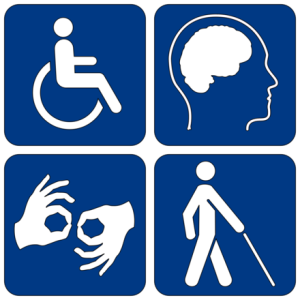Many employers and certainly many employees may be shocked to learn that “Paruresis,” commonly known as “shy bladder syndrome” or the inability to urinate with others present, qualifies as a disability under the Americans with Disabilities Act Amendments Act of 2008 (“ADAAA”). Although the subject is somewhat comical at first blush, it is crucial that employers and employees know that the protections afforded employees are broader than ever. This was not always so; especially for shy bladder syndrome.
Last year, the United States District Court for the Western District of Virginia granted summary judgment (i.e., ending the case) for the employer in Linkous v. CraftMaster Mfg., Inc.,[1] a shy bladder disability discrimination case. There, the plaintiff was terminated after he failed two drug tests. The first test appeared to the testing company to have been suspiciously altered. Plaintiff was asked to submit to a second test, in which he would be observed. Plaintiff then failed to provide an observed urine sample, and was thereafter terminated. Plaintiff alleged that he was unable to urinate because he suffered from paruresis, thus preventing him from urinating if someone was watching. The Court held that Plaintiff was not disabled under the version of the Americans with Disabilities Act (“ADA”) prior to its 2008 amendments because the Plaintiff failed to establish that his impairment substantially limited his ability to urinate at work or in the community. In addition, the impairment appeared to be “sporadic,” which by definition cannot qualify as a substantial limitation under the ADA.
Now under the more expansive ADAAA, however, even some temporary ailments or those having a small effect on a person’s daily life are valid grounds for claiming employment discrimination. On this topic, the Equal Employment Opportunity Commission (“EEOC”) recently issued an opinion letter commenting that shy bladder syndrome can form the basis for an ADA claim. In the letter, the EEOC says that under the ADAAA and its implementing regulations Paruresis now qualifies as a disability by including bladder and brain functions as major life activities, by lowering the standard for establishing that an impairment “substantially limits” a major life activity, and by focusing the determination of whether an individual is “regarded as” having a disability on how the individual has been treated because of an impairment, instead of on what the employer may have believed about impairment.
What does this mean going forward?
The Definition of Disability Has Not Changed
Now, as always, the ADAAA defines a disability as 1) a physical or mental impairment that substantially limits one or more major life activities; or 2) a record of a physical or mental impairment that substantially limited a major life activity; or 3) when a covered entity takes an action prohibited by the ADAAA because of an actual or perceived impairment that is not both transitory and minor.[2]
Major Life Activities Now Include Major Bodily Functions
Under the ADAAA and the EEOC’s regulations, an individual with paruresis, for example, has a disability under the first or second definition if his or her condition substantially limits one or more major life activities.[3] As a result of the expansion of coverage provided by the ADAAA, major life activities include major bodily functions, such as bladder and brain functions, and functions of the neurological and genitourinary systems.[4]
“Substantially Limits” is No Longer as Demanding a Standard
Both the statute and the amended regulations explicitly state that “substantially limits” shall be construed broadly in favor of expansive coverage.[5] Thus, the term now requires a lower degree of limitation than ever before – indeed, an impairment does not need to prevent or severely or significantly restrict a major life activity to be considered “substantially limiting.”[6]
Moreover, whether an impairment substantially limits a major life activity must now be made without regard to the ameliorative effects of mitigating measures.[7] So, an individual’s paruresis substantially limits a major life activity if it would do so in the absence of treatment, including cognitive-behavioral therapy and/or medication.
The statute and regulations also state that an impairment that is episodic or in remission is a disability if it would substantially limit a major life activity when active.[8] Therefore, whether an individual’s shy bladder substantially limits a major life activity is based on the limitations imposed by the condition when its symptoms are present.
It is Easier for Individuals to Establish Coverage Under the “Regarded As” Definition of “Disability”
Under the ADAAA and the EEOC’s regulations, an employer “regards” an individual as having a disability if it takes an action prohibited by the ADA based on an individual’s impairment, or on an impairment that the covered entity believes the individual has, unless the impairment is both transitory and minor.[9] Under the ADAAA, the focus for establishing coverage is on how a person has been treated because of an impairment, rather than on what an employer may have believed about the nature of the impairment.[10] Paruresis is not a transitory impairment, so if an employer takes an adverse action against an individual because of paruresis, whether the condition is real or perceived, the individual probably will be “regarded as” having a disability.
At bottom, these are huge changes for employers and employees. With change comes uncertainty. It is imperative that both employers and employees understand that because the law is evolving they should seek legal advice if they are unsure about where they stand in relation to the ADAAA.
[1] 2012 WL 2905598 (W.D. Va. July 16, 2012)
[2] 42 U.S.C. § 12102(1); 29 C.F.R. § 1630.2(g)(1)
[3] 42 U.S.C. § 12102(1)(A), (B); 29 C.F.R. § 1630.2(g)(1)(i), (ii).
[4] 42 U.S.C. § 12102(2)(B); 29 C.F.R. § 1630.2(i)(1)(ii).
[5] 42 U.S.C. § 12102(4)(A); 29 C.F.R. § 1630.2(j)(1)(i).
[6] ADA Amendments Act of 2008, Pub. L. No. 110-325, § 2(b)(4), (6), 122 Stat. 3553 (2008); 29 C.F.R. § 1630.2(j)(1)(ii), (iv)–(v).
[7] 42 U.S.C. § 12102(4)(E); 29 C.F.R. § 1630.2(j)(1)(vi).
[8] 42 U.S.C. § 12102(4)(D); 29 C.F.R. § 1630.2(j)(1)(vii).
[9] 42 U.S.C. § 12102(3); 29 C.F.R. § 1630.2(l).
[10] 29 C.F.R. § 1630.2(j)(1)(iii).



